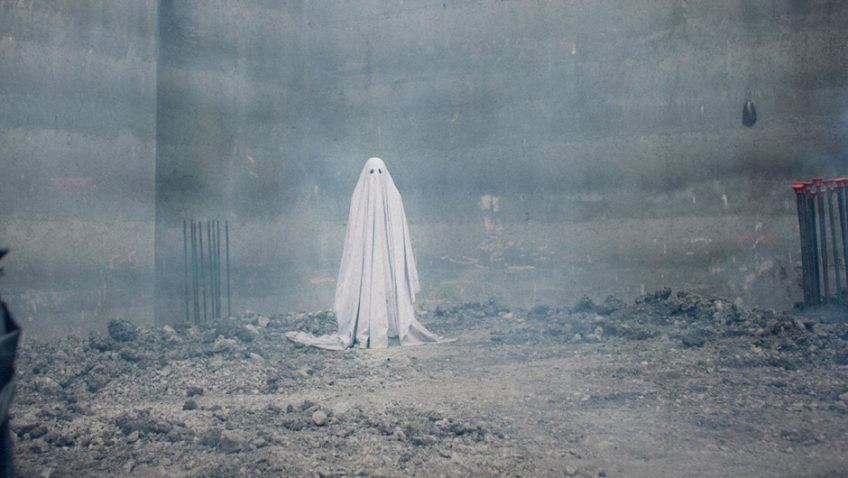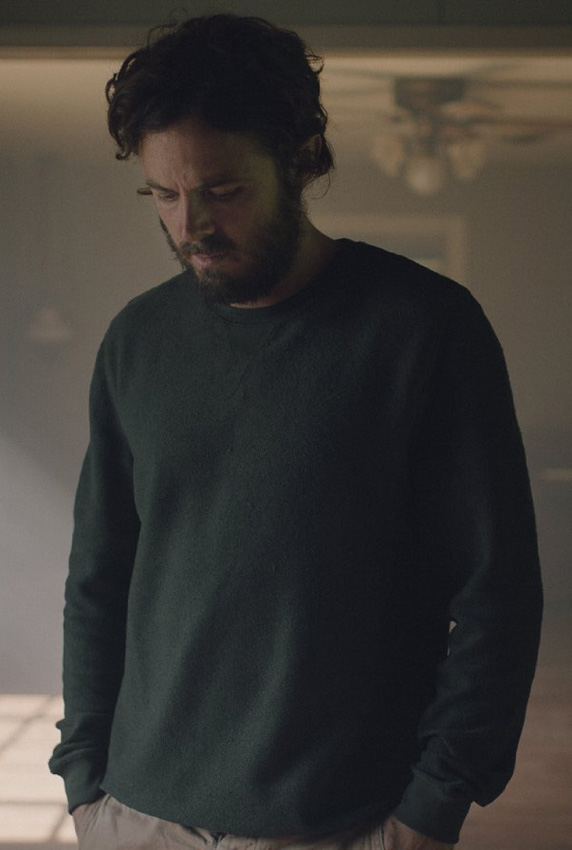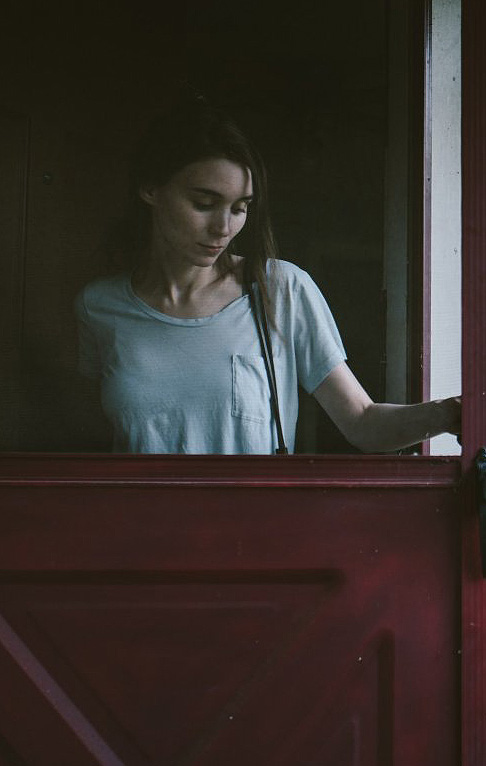Joyce Glasser reviews A Ghost Story (August 11, 2017) Cert. 12A, 92 min.
The year 1990 saw the release of two romantic, poetic and memorable movies about a male ghost who returns to comfort his partner: the late Anthony Minghella’s Truly, Madly Deeply and Jerry Zuker’s Ghost. Both of the popular, much loved actors who played the ghosts, Alan Rickman and Patrick Swayze, have since died prematurely, a thought that makes the writer/director David Lowery’s beautiful, melancholic new film, A Ghost Story, all the more haunting.
Lowery reunites Casey Afflick (who has since won an Academy Award for Manchester by the Sea) and Rooney Mara (who has since been nominated for an Academy Award for Carol) from his poignant, atmospheric story of love and separation, Ain’t Them Bodies Saints (2013). You can see why. Whilst they are only together as a living couple for the first ten minutes of the film, their chemistry must be real enough to make us believe in and actually feel the pain of separation for the film’s duration.
The film opens with a disorientating sequence about a couple (oddly identified – in the end credits – as C and M) in the process of moving. They discuss a piano as C, presumably a musician, invites M to listen to a song he is writing. Both the piano and song reappear in the film. In the production notes, Lowery states that the idea of the film arose from an argument he had with his wife about moving to Los Angeles from his native Texas for his career. People on the move through time and space is a recurrent theme as we watch this one house’s life through time.
C and M slowly fall asleep in one another’s arms and with this intimate scene, their love is transmitted to the viewer. They are awoken by a noise and they investigate; is it a ghost? The way they interact indicates a couple very much in love and comfortable in one another’s company. Outside, mist surrounds the worn and weathered white, ranch house that is set back from the road in a large plot of land.
Whatever the young couple’s plans, they are not destined to materialise. When we next see C, he is slouched over the wheel of his car, on the minor road next to his house; the victim of a head-on collision. M identifies the body in the morgue but when she leaves, the camera remains behind on the body, lying under a white sheet.
We might not be surprised to see a body sit up and walk off in a John Carpenter film, but here you might be forgiven for laughing. For C walks out of the morgue completely covered in a long white sheet with only his eyes showing through two holes – like a Halloween costume. There is only pathos, however, when cinematographer Andrew Droz Palermo gives us an emotive wide shot of this sheet traipsing across the huge expanse of a chilly field as the light fades. The sheet drags behind him, like the train of a bride who has been ditched at the alter. He is walking purposefully toward the white house where he will remain.
Lowery’s exploration of space, time and longing begins with C’s homecoming. In a scene as uncomfortable for the viewer to watch as it must have been for Mara to enact, M returns home and unwraps a pie that a neighbour has baked as a condolence offering. With a folk but not plate, she sinks to the floor of the kitchen guzzling down the entire pie in a real-time, four-minute take. Any expository dialogue – a phone conversation, for instance, or a letter, expressing M’s grief, would have broken the ethereal spell that Lowery creates with his silence. We understand her grief from her self-destructive act of eating the whole pie. Across the room the white sheet watches her and, while we never see his body or face, somehow beneath this sheet (Affleck won his ‘Manchester’ Oscar for his role as a grieving, separated husband) we know that C is moved. After vomiting, she falls asleep, C places a hand on her back – his only contact with M – and watches her sleep.
C is not always a passive observer. When a man accompanies M home and kisses her at the doorway, he protests. The lights flicker and books fly off the shelf, one (cheekily) opening to a passage in Love in the Time of Cholera, García Márquez’s magical realist story in which ghosts are a part of life. The ‘Cholera’ in the title equates the pangs of a lover’s separation to the plague, but in Spanish, ‘cólera’, also means anger and rage.
Finally it is time for M to move on. Before closing the door for the last time, M decides to leave a folded note in a crack in the wall. A forlorn C assiduously tries to obtain this note, as though, as the years pass, he is digging for buried treasure.
When M leaves, C stays behind and the seasons change, suggesting that what the ghost is attached to is the memory of his time in the house with his loved one. This idea is reinforced by a scene of comic relief when, one, day, C spots another ghost like himself in a neighbouring window. They communicate with sub-titles and greet one another. ‘I’m waiting for someone,’ the other ghost answers C. ‘Who?’ asks C.
‘I don’t remember,’ the other ghost replies.
C is there to witness the house changing hands. Watching the family life that is denied him angers C, when a Hispanic mother and two happy children move in. He wreaks such havoc in the house that the frightened family move out. When the next owners throw a housewarming party, a drunken, pseudo philosopher, (Will Oldham, who contributed music to Lowery’s wonderful Disney movie Pete’s Dragon) pontificates about what will survive eternity – a question Shakespeare addressed in Sonnet 18, promising immortality to the addressee through his verse.
Houses and ghosts go together, of course, and Lowery expands upon the idea of a haunted house in a somewhat confusing, metaphysical exploration of time and space in the final part of the film. We see the house bulldozed, an office building erected, and then watch a doomed pioneer family (Texas became a state in 1945) building a camp fire perhaps on the spot where a house would be erected.
Lowery gives us no context; we don’t even know if C and M are married or why they moved to this house. And M is not defined as a character. We don’t know what she does for a living or where she goes after leaving the house. In a way, this does not matter. The film is a tone poem to loss. It resembles Apichatpong Weerasethakul’s sometimes painfully slow, but hypnotically beautiful allegory Cemetery of Splendour, (2016) in which a mysterious sleeping epidemic unites the living and the dead.
You can watch the film trailer here:







